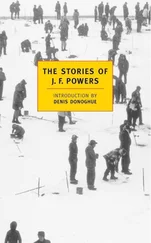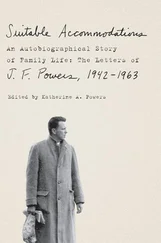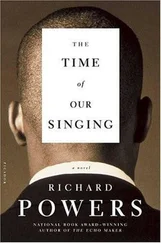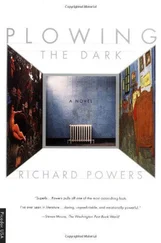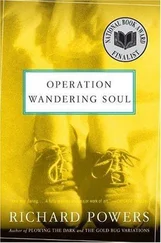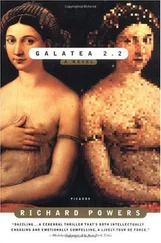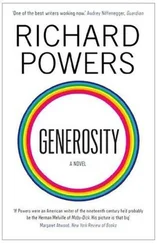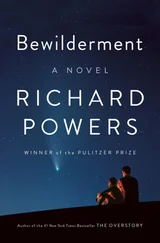Els grew; he broadened, under the attack. At last, the jagged terrain that Mattison pushed him toward opened up its cold magnificence. And like the businessman who finds one Friday that he might enjoy dressing up as a woman and heading to a dark cellar club on the other side of town, Peter Els embraced his panic and thrilled to realize that he might be free to make anything at all.
For years, the crisis lay in choosing Schoenberg or Stravinsky. By 1966, both those men sounded old and quaint. European postwar weirdness, American pop ballads, magnetic tape, advertising ditties, and gnarly microtones all collided in one big free-for-all. Yet the wider the choice, the more every conscript in the program wanted Els to declare allegiance. He grasped this one night in a campus bar, while Dylan wailed “Desolation Row” on the jukebox, that reworking of the old United Mine Workers anthem: Everybody’s shouting, “Which Side Are You On?”
He knew no earthly reason why he should have to choose. Yet he now saw — crazy late — just how the pecking order worked. The high-concept men got all the performances. The twelve-tone formalists got all the cachet. And with new Ph.D. programs in composition sprouting up all across the country, to compete for grants, you needed a system as pure as physics. And so the choice came clear to Els: radiant versus rigorous, methodical versus moving.
For as long as he could, Els crept between camps like a Swiss diplomatic courier. But the fray said declare, or be despised by all. And soon enough, the fray began to excite Els.
It was his pure dumb luck to be alive in the morning of that revolution. For one more time, music had causes to champion, utopias to foster, and idols worth demolishing. Not since ars nova in the fourteenth century or the development of sonata-allegro form at the end of the eighteenth had there been a better time to be a beginner.
And beginnings were everywhere for the taking. One Saturday, out scavenging his week’s stock of TV dinners in the freezer aisle of the Jewel, Peter heard a girl, no more than ten, in pink shorts, flowered peasant blouse, and flip-flops, humming to herself while bathing in the cold clouds that poured from the open door of a Popsicle case. The tune hit Els like a distilled Magnificat. Over the span of two manic months, he took the girl’s ditty and turned it into the twenty-minute Rapture, for chamber orchestra, soprano, and four reel-to-reel tape machines. The six pitches of that singsong fragment, combined and recombined, slowed, sped up, inverted, reversed, stacked into evolving rhythms and incanted in banks of antiphony, blossomed into a fantasia.
Mattison condemned the finished piece as decorative. Johnston liked the virtuoso reach, but wanted something more purged of familiar harmonic gestures. Hiller found it intriguing but inchoate. And Brün wanted to know how such music helped bring about a more just society.
Els squirreled away his teachers’ cavils and crafted his revenge. He spent nights in the electronic studio, coaxing the theremin, splicing tape loops, and learning how to program. The computer made it possible to shape any pitch, amplitude, timbre, and duration, and combine these into the voiceprint of the early space age. But omnipotence made Els sad. He yearned for the clumsy, freighted flights of earthly instruments.
In secret, he returned to the exhausted vocabularies of the old masters, looking for lost clues, trying to work out how they’d managed, once, to twist the viscera and swell whatever it was in humans that imagined it was a soul. Some part of him could not help believing that the key to re-enchantment still lay in walking backward into the future.
Picasso: “Art is dangerous. Art is not chaste.” Ellington: “When art ceases to be dangerous, you don’t want it.”
There were women in those years, one brittle and misgiven, the other glad and loud. Each had a music, though neither was Clara, whom Peter now hated with such force it left little room in him for other need. There were entertaining men, too, friends whose crackpot ideologies seemed just the thing for a month or two. Above all there was his growing technique, the greatest chemistry set a boy could want.
By demented but rigorous Cold War logic, composing kept him out of the jungles of Southeast Asia. People in marble buildings out East vowed to beat the Communists at every available proxy war: athletics, chess, showpiece architecture, even high culture. And that meant deferments for student composers. The State Department and the CIA even sent the best of Els’s colleagues on concert tours to Thailand, Argentina, Turkey, and other contested world hot spots.
Back in his first year in graduate school, Els had sat in a TV room at the Illini Union, surrounded by giddy students, watching a bulky, grainy, rabbit-eared black-and-white set bolted to the wall as the Beatles played Ed Sullivan , their infectious seventh chords electrifying the room. By the time he started his doctoral portfolio, a great feedback loop of influence had swept him up. Everyone was picking everyone else’s pockets: the Fab Four stealing from Stockhausen for Sgt. Pepper ; Andriessen and Berio rearranging Lennon and McCartney. For a few bright months, high and low, timid and adventuresome, coarse and intricate, all braided around each other in complex counterpoint. But by the year Els left school for good, the gods were fumbling around up on a London rooftop, trying and failing to get back home.
For three years, Peter lived in a graduate flophouse in West Urbana — a majestic old turn-of-the-century American Gothic carved up into separate units, each serviced by its own fire escape, with a dozen mailboxes in a police lineup on the front porch. There, in the fall of ’66, his roommates clamped him in a wing chair, fed him hash brownies, and launched him on a marathon listening session that seemed to spread out across days. They started him on The Well-Tempered Clavier. Kaleidoscopic lines burst in Peter’s head like tangled stairways in a Piranesi labyrinth. Indescribable arcs separated themselves from the flood of music and struck off on lives of their own. Those independent lines in turn formed — in the surprise intervals they struck when gliding over each other — further unheard melodies, airs folded perpendicularly inside other airs, or buried like cryptic crossword hints that hid the keys to their decoding inside another would-be clue. The weave staggeredhim — a two-minute proof of time’s divine design.
Who’s playing? he shouted, with an urgency that sent the group into hysterics.
He was disappointed to learn that it was Gould. I always hear all the counterpoint, with Gould. Try me with Richter.
The secret weaving was still there, even in Richter’s pedaled blur.
Six more hash excursions with much careful note-taking ended in disillusionment. Pot was a private aha. All the glories were sealed in the locked room of the smoker’s brain, and turned to a joke when he sobered. Els was after something more solid, a priori, shared — durable wonder raining down on whole roomfuls of listeners at once.
Then a summer night, a gram and a half of P. cubensis , and Els found himself swimming upright, propelled by thought through a field filled with what announced itself as filaments of pure life stretching out much farther and deeper than the mere world. The stars spoke in patterns of brilliance so obvious he’d forever overlooked them. The field was pure music, Jupiter unbound, one of an endless, renovating series of theres that the brain might live in, were it not shaped so mercilessly for here.
Music has killed more people than Serratia ever did.
Babbitt asked the question to the country’s face: Who Cares if You Listen? His manifesto made the rounds, drawing more readers than his music had listeners. Music knew things. It had its expanding toolkit, no less than chemistry. If you wanted to go deep, to make the full journey, you had to study the language.
Читать дальше

